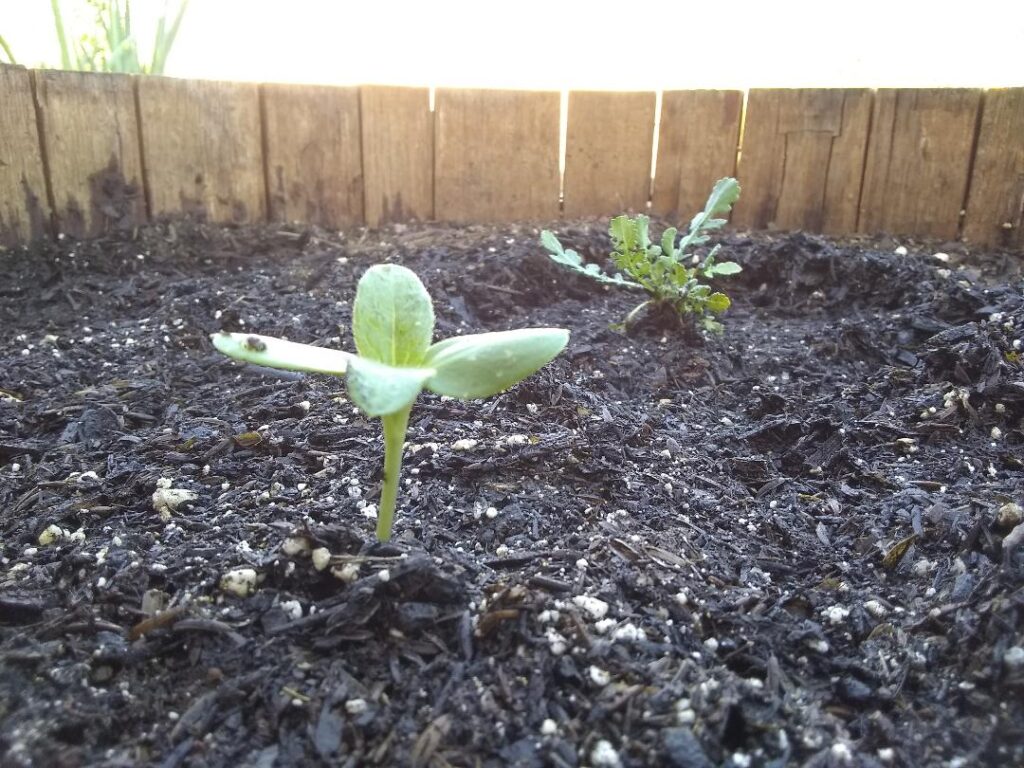Ask the sunflowers. Among three different Tucson-area locations I tend, sunflowers are sprouting this spring in: pots and raised beds where my son and I planted them (barrel in title image), a rock border where seeds accidently scattered, deeply-watered beds where last year’s plants dropped seeds, and spottily-watered beds where students secretly poked them. The following outline describes some basic garden forms I have been successful with in and around Tucson, Arizona. Come along for a little tour!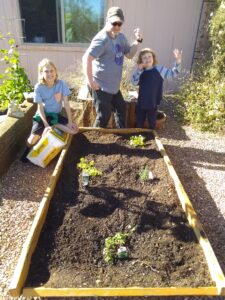
In Raised Beds
- walls made of wood, brick, or plastic
- bottom optional if on ground, but must have drainage
- on legs or on ground
- filled with purchased* soil or a blend of purchased material and native soil
- pros:
- don’t have to dig into native soil
- easily purchased
- easily accessed if it’s tall enough
- can provide protection from critters
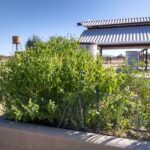
- cons:
- depends on irrigation (rainwater doesn’t naturally flow into it)
- takes time and/or money to build
- still may not provide protection from critters
In Containers
- a pot, bucket, even a storage tub
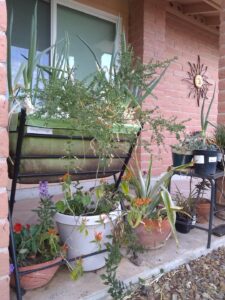
- made of plastic, wood, pottery, even fabric
- must have good drainage (i.e. holes drilled in bottom)
- filled with purchased* potting soil
- pros:
- flexible location
- creative colors and shapes
- useful in small spaces
- useful for small to medium plants
- can water individual pots according to plants’ water needs
- cons:
- require frequent watering
- depends on irrigation
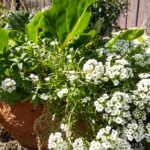
- less useful for large plants
Sunken bed or basin
- dug into ground, slightly below surface level
- made of soil – use native soil to shape the bed

- drainage ability depends on local native soil
- filled with a combination of native soil and purchased* soil and compost
- pros:
- uses locally available material
- catches and retains rainwater
- easy to water with hose by filling basin less frequently than daily waterings
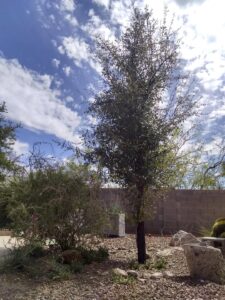
- can mix high- and low-water-use plants by planting in middle vs. edge
- can be incorporated into water flow of landscape
- cons:
- effort to dig in native soil
- still requires additional soil or amendments
- must lean over or kneel to reach
- may require path or steps to access within bed
- may require fence to deter critters
In classic in-ground rows
- area like sunken beds or basins, but at ground level
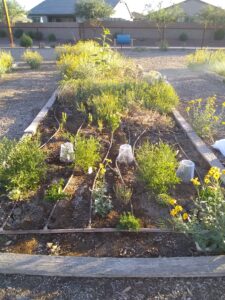
- made of soil – can shape rows to desired width and height
- drainage ability depends on local native soil
- filled with native soil and amendments
- pros:
- least prep work structure-wise
- looks tidy
- lots of possible layouts and plant groupings
- space for large or perennial plants
- may catch and retain some rainwater
- can be incorporated into water flow of landscape
- cons:
- deceivingly easy – methods from other regions likely won’t apply
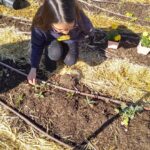
- success depends more heavily on condition of native soil (holds onto too much water if you have high clay or caliche, drains too much water and nutrients if you have high sand)
- high maintenance work (i.e. weeds, re-shaping rows)
- requires path or steps to access within bed
- may require fence to deter critters
- deceivingly easy – methods from other regions likely won’t apply
Where the plants grow 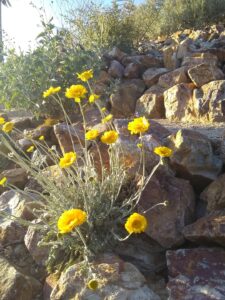
- Volunteers – A weed is only a plant growing where you don’t want it to grow. If you’re curious and it’s not in the way, let it stay. If you find out it’s an invasive species like buffelgrass or fountaingrass, please remove it.
- Rock garden – What is sheltered among gravel or rocks, planted or volunteered? A good option for native plants, whether edible to humans or habitat for other critters.
- Compost – Some of my strongest plants sprouted from unfinished compost added to a bed or container.
Soil matters
My go-to store-bought soils for containers: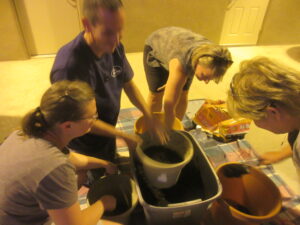
- Kellog’s “Patio Plus” or “Raised Bed and Potting Mix” for better drainage
- Tank’s Green Stuff “Pro Potting Mix” for better water holding if using shallow pot
- Fox Farm’s “Ocean Forest” for more nutrients
For amending/mixing in with native soil for in-ground or raised beds:
- Kellog’s “All-Natural Garden Soil”
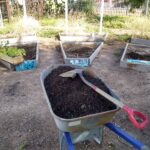
- Tank’s Green Stuff compost
- Or don’t buy 😊 If you are making your own compost, add liberally to your garden.
Where can YOU grow a garden? A Tucson garden can be in the ground or on a patio, in premium soil or among rocks, in manufactured beds or scraped up from what you already have! Learn the pros and cons, imagine what you wish for, then do it – give your garden(s) a try. Nature to You welcomes your stories and questions along the way.

